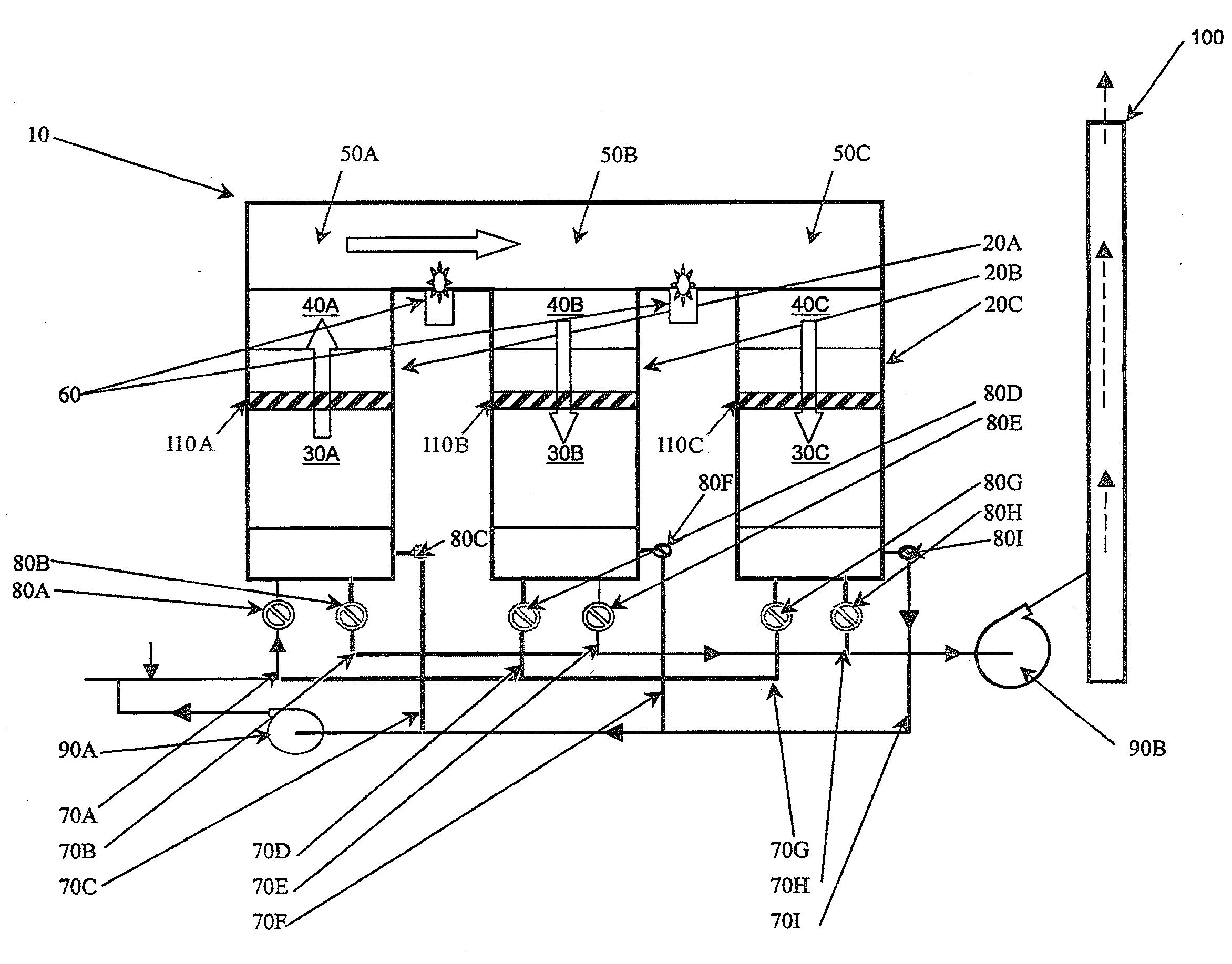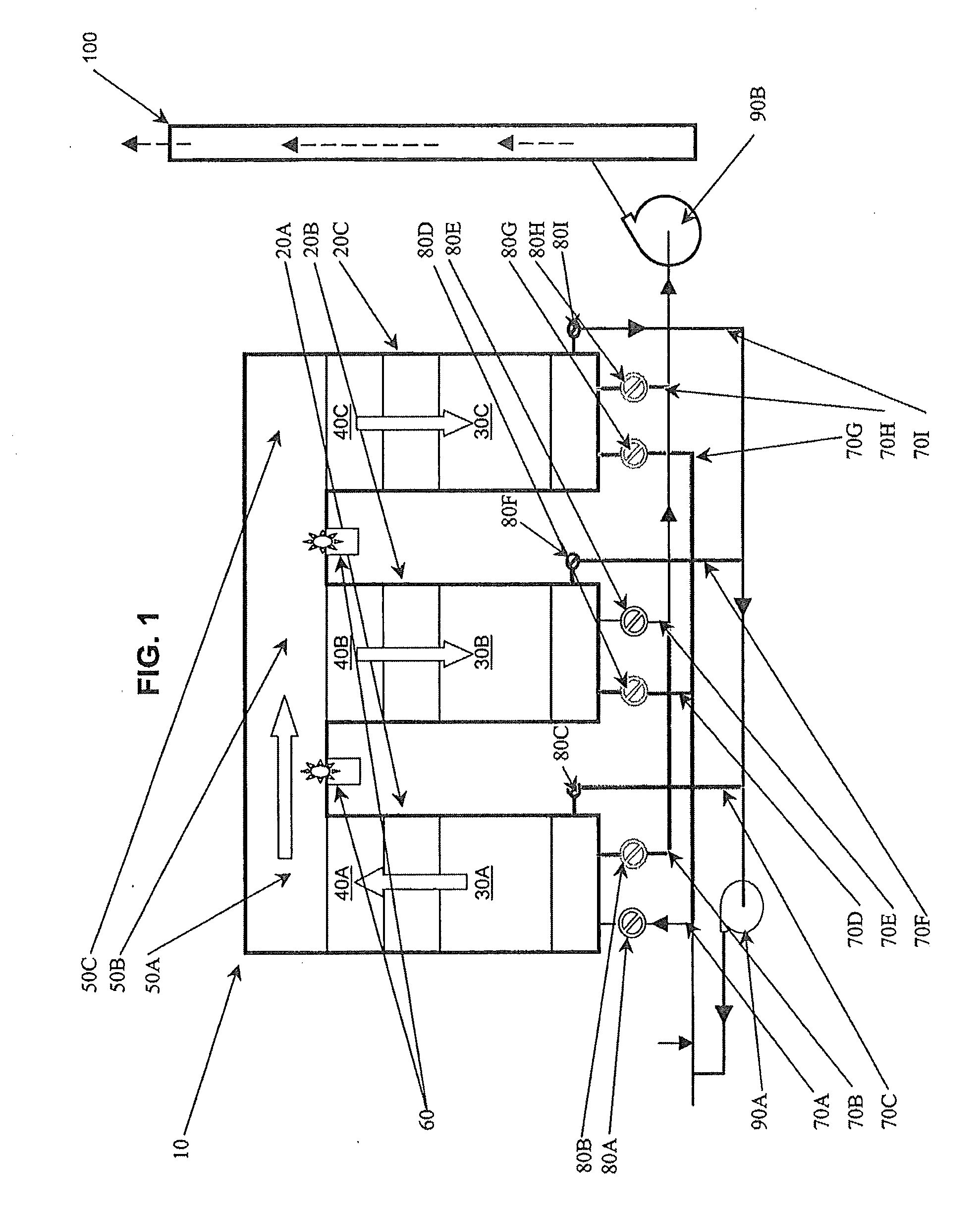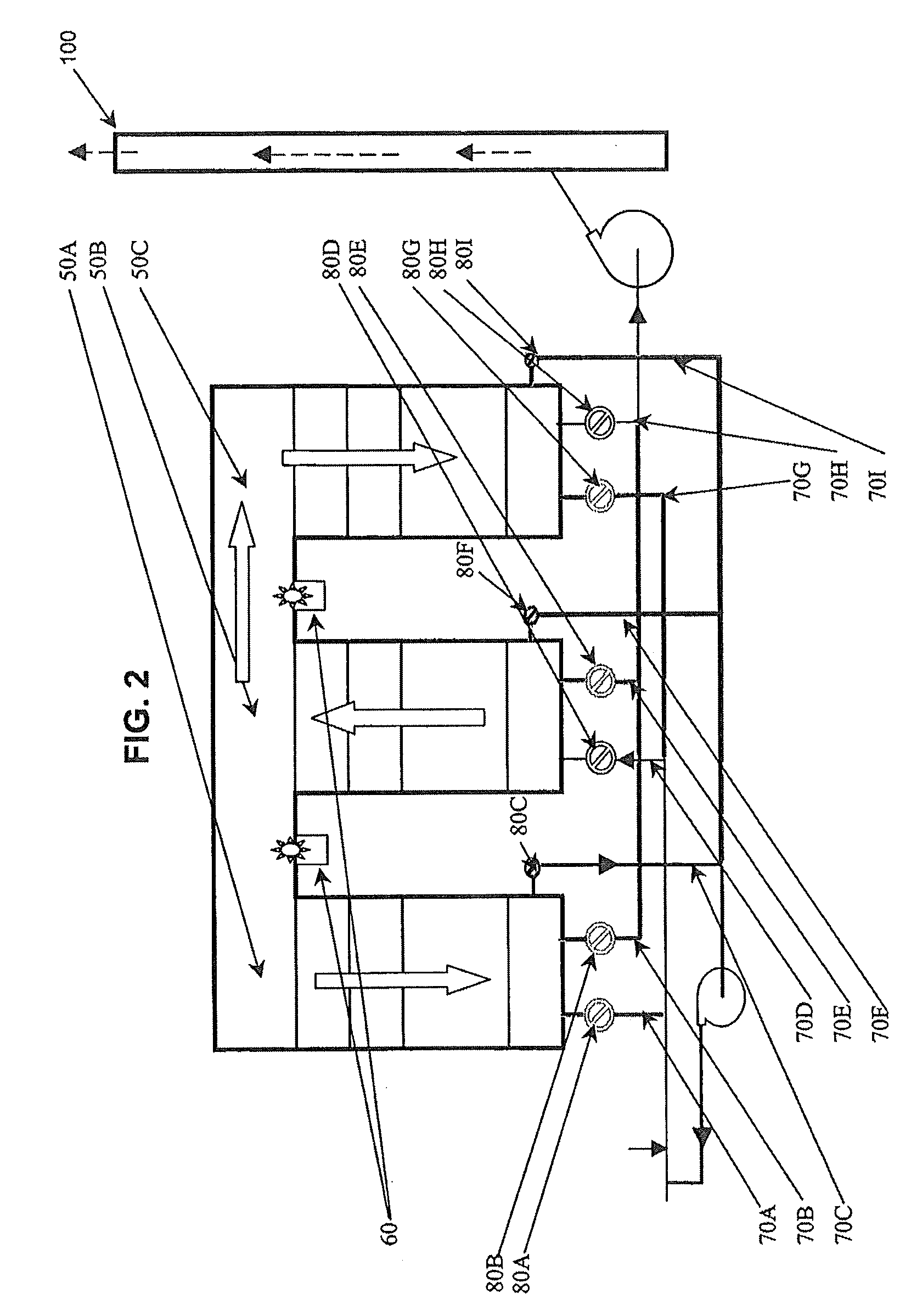Systems and Methods for Removing Materials From Flue Gas Via Regenerative Selective Catalytic Reduction
a technology of selective catalytic reduction and flue gas, which is applied in the direction of combustible gas purification/modification, separation processes, lighting and heating apparatus, etc., can solve the problems of not having to meet unacceptable thermal inefficiency when carried out, nor the need for costly design changes to implement, so as to facilitate the performance of subsequent cycles and the level of ammonia slip is not excessively high
- Summary
- Abstract
- Description
- Claims
- Application Information
AI Technical Summary
Benefits of technology
Problems solved by technology
Method used
Image
Examples
Embodiment Construction
[0029]FIGS. 1-3 depict a regenerative selective catalytic reduction (RSCR) apparatus 10. The RSCR apparatus 10 is sited within other industrial equipment (not shown) that outputs airborne materials (e.g., flue gas) into the environment. Examples of such industrial equipment include, but are not limited to, high-temperature combustion equipment and power plant equipment. The specific location of the apparatus 10 within such industrial equipment can vary; however, according to a currently preferred embodiment of the present invention, the RSCR apparatus is located at the so-called “tail end” (i.e., “cold side”) of the industrial equipment. Other exemplary locations for the RSCR apparatus include, but are not limited to so-called “hot side” locations, e.g. “hot side, low dust.”
[0030]The RSCR apparatus 10 includes a plurality of chambers (also known as canisters, housings, units or segments) 20 into and out of which contaminant-containing (e.g., NOx-containing) gas flows to be heated or...
PUM
| Property | Measurement | Unit |
|---|---|---|
| temperature | aaaaa | aaaaa |
| temperature | aaaaa | aaaaa |
| temperature | aaaaa | aaaaa |
Abstract
Description
Claims
Application Information
 Login to View More
Login to View More - R&D
- Intellectual Property
- Life Sciences
- Materials
- Tech Scout
- Unparalleled Data Quality
- Higher Quality Content
- 60% Fewer Hallucinations
Browse by: Latest US Patents, China's latest patents, Technical Efficacy Thesaurus, Application Domain, Technology Topic, Popular Technical Reports.
© 2025 PatSnap. All rights reserved.Legal|Privacy policy|Modern Slavery Act Transparency Statement|Sitemap|About US| Contact US: help@patsnap.com



